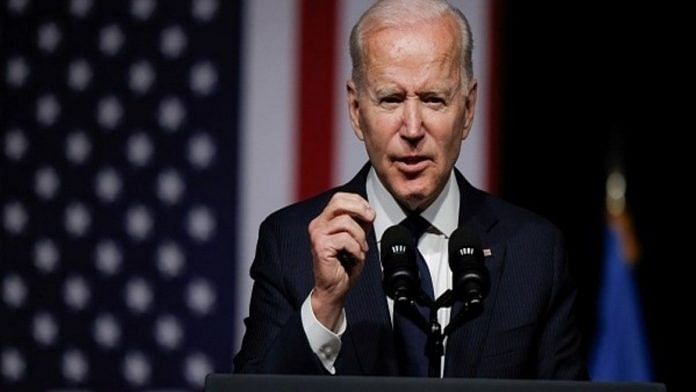New Delhi: The Biden-Harris administration in the US Monday sent Congress a proposed $813.3-billion budget for national defence for the fiscal year (FY) 2023. Out of this, $773 billion is for the Department of Defense (DoD).
The request comes as Russia’s invasion of Ukraine enters its fifth week, while the perception of a growing threat posed by China continues to occupy the mindspace of policymakers in Washington, D.C; the budget describes China as a “pacing challenge”.
The FY 2023 defence budget request marks a $35billion increase from the $778– billion requested in FY 2022. This hike can be seen in the context of China raising its defence spending in 2022. At the beginning of March last year, China announced a 7.1 per cent rise in its fiscal outlays for defence.
The DoD has declared that the President’s proposed budget will allow the US to “develop, procure, and modernise capabilities to ensure combat-credible forces across all domains to address the pacing challenge from China and to address acute threats from Russia.”
The budget request has also set aside $1.8 billion to support the Biden administration’s Indo-Pacific strategy. $300 million has also been allotted to security assistance for Ukraine.
Also read: Diamonds & blood: How sanctions against Russian diamond industry can help crime, hurt India
Pillars of focus
The budget earmarks three areas to enhance US security and national interests. These are: integrated deterrance, campaigning, and building enduring advantages.
The priority for integrating deterrence is to work across warfighting domains, operational theatres, and the network of alliances, partnerships, and other departments of the US administration to ensure robust countering mechanisms to any threats faced by the country.
For campaigning, the DoD aims to ensure that military initiatives are planned in accordance with overarching state policies and objectives.
Critical to campaigning is ensuring that US forces are ready to operate across the spectrum of conflict theatres that the country faces. The DoD has demarcated $135 billion for this preparedness.
Finally, the focus on integrating deterrence and campaigning feeds into achieving the third goal of building enduring advantages for the US.
A focus on human capital is central to this third goal. The DoD plans to provide a 4.6 per cent pay raise for their civilian and military personnel.
The government also aims to invest $130.1 billion in research and development for enhancing these advantages. This marks a 9.5 per cent increase from the 2022 budget for research and development. Further, $16.5 billion out of this R&D pool has been set aside for science and technology.
Apart from these three, the proposed budget also focuses on nuclear modernisation and missile defence. The Biden-Harris administration is requesting $34.4 billion for nuclear modernization, and $27.6 billion for space missile warning, missile tracking, and space launch programmes. It’s also setting out $24.7 billion for missile defence technologies.
Also read: China reached out to India as it’s facing heat from US on Ukraine. But Wang Yi bungled
China, Russia, and the Indo-Pacific focus
In the context of the the strategic rivalry between Washington and Beijing, the requested budget focusses on addressing the threat posed by China in the Indo-Pacific and beyond.
In its press release, the DoD declared that “Our budget reflects our National Defense Strategy and the focus of that strategy on the pacing challenge of China”. The requested budget categorises China as the primary strategic challenge faced by the US. Russia, on the other hand, is listed only as a “persistent threat”.
Specifically, the requested budget demarcates $400 million for a “Countering the People’s Republic of China Malign Influence Fund”.
A significant thrust of the budget’s “building deterrence” pillar is to strengthen deterrent capacities in the Indo-Pacific, given the persistent threat posed by China there there.
Deputy Secretary of Defense Kathleen Hicks stated that “the department will focus our campaigning efforts in the Indo-Pacific”.
(Edited by Manoj Ramachandran)
Also read: Status of Ukraine war: 33 days on, battlefield ‘largely static’, no Russian moves in many areas





